After locating the tiny, hidden, public beach walkway to the North Atlantic, I shed my shoes and crested the top of a dune twenty minutes before sunrise. The view was expansive, and stunning, and all of the things that an Outer Banks, North Carolina barrier island beach can be, wide and undulating, black and tan topped by thousands of broken shells worn smooth by time. That deep sand isn’t easy to walk on; my tire-track-crossed trek to the water seemed graceless and rugged. It was almost unfamiliar, and after all these months of not wandering beaches, wonderful. I stood and simply drank in the scene.
My gaze was drawn to the horizon, dark gray with a crack of orange above it. I hadn’t seen this particular water from this particular direction for half a decade. In those five years I felt things I never imagined feeling and experienced sensations that few people do. I have learned an inconceivable (unfathomable, pardon the pun) amount about the ocean outside Cape Hatteras. I still don’t know much.
I will never forget the first time I sailed beyond sight of land. Yes, you feel small, yes, you feel vulnerable, and yes, you feel free. “Oh, the Places You’ll Go!” Dr. Suess sagely told me. There are thousands of places to see via water, although the logistics are complicated. And like most of us, I have seen remarkably few of them.
That is the essence of long distance boating, really. It’s not quite like anything else and it’s not for everyone. Hard to describe, hard to imagine. This stretch of geography is nicknamed the Graveyard of the Atlantic, shallows and shoals that reach farther out than anyone thought they could or would, before it had been tested and charted. You still can’t trust the charts; the forces are dynamic, creating shifting depths and moving those long-lost wrecks around.
The first time I ever experienced it, December 1st 2021, the North Atlantic Ocean showed itself as a sheet of reflective glass at dawn, a rare sight indeed. I will never forget, but honestly I appreciate it much more now than I did then, because in the last seven passages I have seen what it usually is, I have seen what it can be, what it can do, and why it is the Graveyard of the Atlantic. I get it.
If you don’t respect these places, they can and will bring you trouble. Last week I wrote about the superstitions of those of us who live and work upon the water. (Read that here.) This isn’t much different; there are simply places on the planet that deserve your respect, reverence even. This is one of them. The currents, winds, tides, storms and depth changes create powerful movements, indomitable forces that can sink ships. It’s that simple.
I’m writing this a mere eight miles north of Cape Hatteras Lighthouse, iconic with its black and white curving stripes, and only eleven miles from the Cape itself with all the angst it can bring to sailors and boaters alike. The last time I saw that light it was comforting; with a twenty-two mile range, I could see the beacon for most of my night watch, coming up the coast from the Bahamas last May.
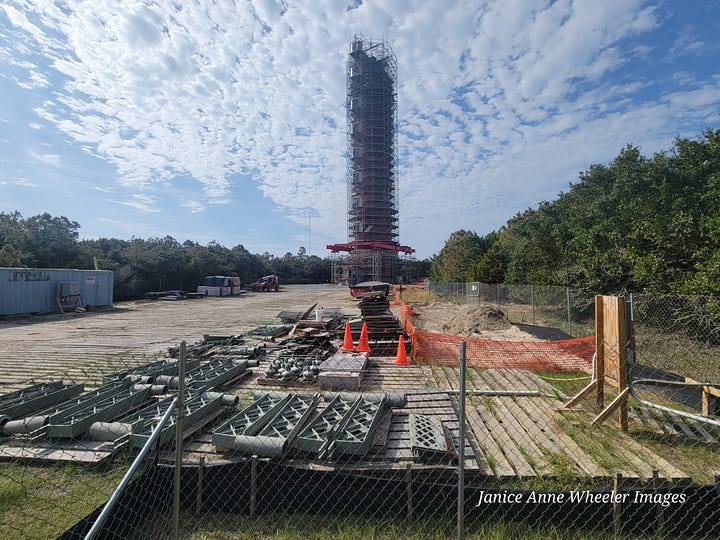
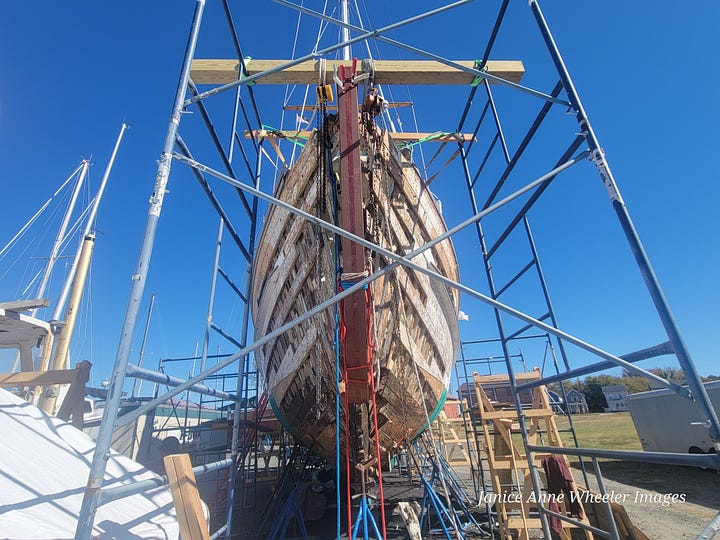
Our cruising friends, if given the choice, won’t go around the “outside.” They just don’t. That passage is SPARRING WITH MOTHER NATURE at its finest. The Southern ocean is big and scary and volatile, but it doesn’t make experienced yachtsmen tremble quite like Cape Hatteras, and once you get around that obstacle you still have Frying Pan Shoals to contend with and the long uncertain current line where the Gulf Stream meets rivers, runoff and underwater ridges. On a good run it takes us thirty hours. On a rough run thirty hours is interminable. I’ve had it both ways. My husband has seen it most ways.
We arrived on Pamlico Sound a week ago; Pamlico is the broad, shallow interior of North Carolina’s Outer Banks. Most folks don’t realize just how far out from the mainland that stretch of shallow water goes. I drove over the Oregon Inlet Bridge and could see the confused, tossing seas of this particular entrance. For many a sailor, that inlet is considered a no-go. Dangerous, unpredictable, shifty. Loose Cannon wrote a recent story about a new chart company that recommended the passage from Norfolk, out of the Chesapeake Bay south and then entering Oregon Inlet to arrive at the Intracoastal Waterway.
There was headshaking when that article was published, I assure you. Read it here. I can remember the first time STEADFAST sailed past Oregon Inlet, headed south, and I had inquired about it. “Emergencies only,” came the reply, “That might just make matters worse. And we can’t make it under the bridge.” The Captain’s tone of voice told me there was no room for discussion on the matter. There aren’t any other navigable inlets. No plan B.
My mind snapped back in time, then, to May of 2023, ten miles offshore of that very inlet, when the top of our Main Mast failed, leaving us motoring north the remaining twelve hours to the Chesapeake Bay with a slack rig and tension in every cell. It was an interesting repair and dangerous enough situation that WoodenBoat Magazine published my tale in Issue #298, May/June of this year. A photographic essay on how to repair a spar while, as always, SPARRING WITH MOTHER NATURE.
Eight days in a row now, I have walked from the sound to the ocean; the sunrises never disappoint. I no longer visit these beaches as one who comes to vacation and gazes wonderingly out at the horizon line. Life has shown me a far different perspective. I’ve seen it, up close and personal, from the other side.
~J
What a perfect week it is to reflect on other people’s perspectives AND read something that is completely apolitical. Enjoy, share, delve into your memories about travel and reveal your new perspectives, if you are so inclined.
Share the story!





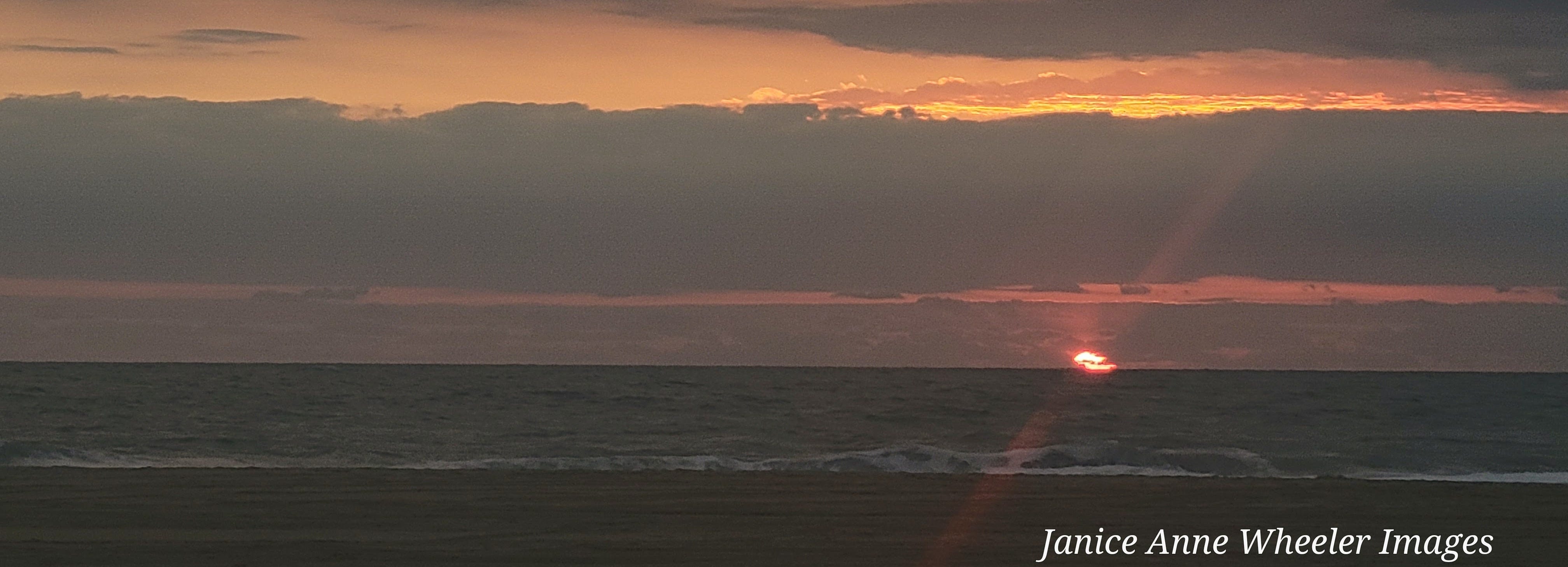
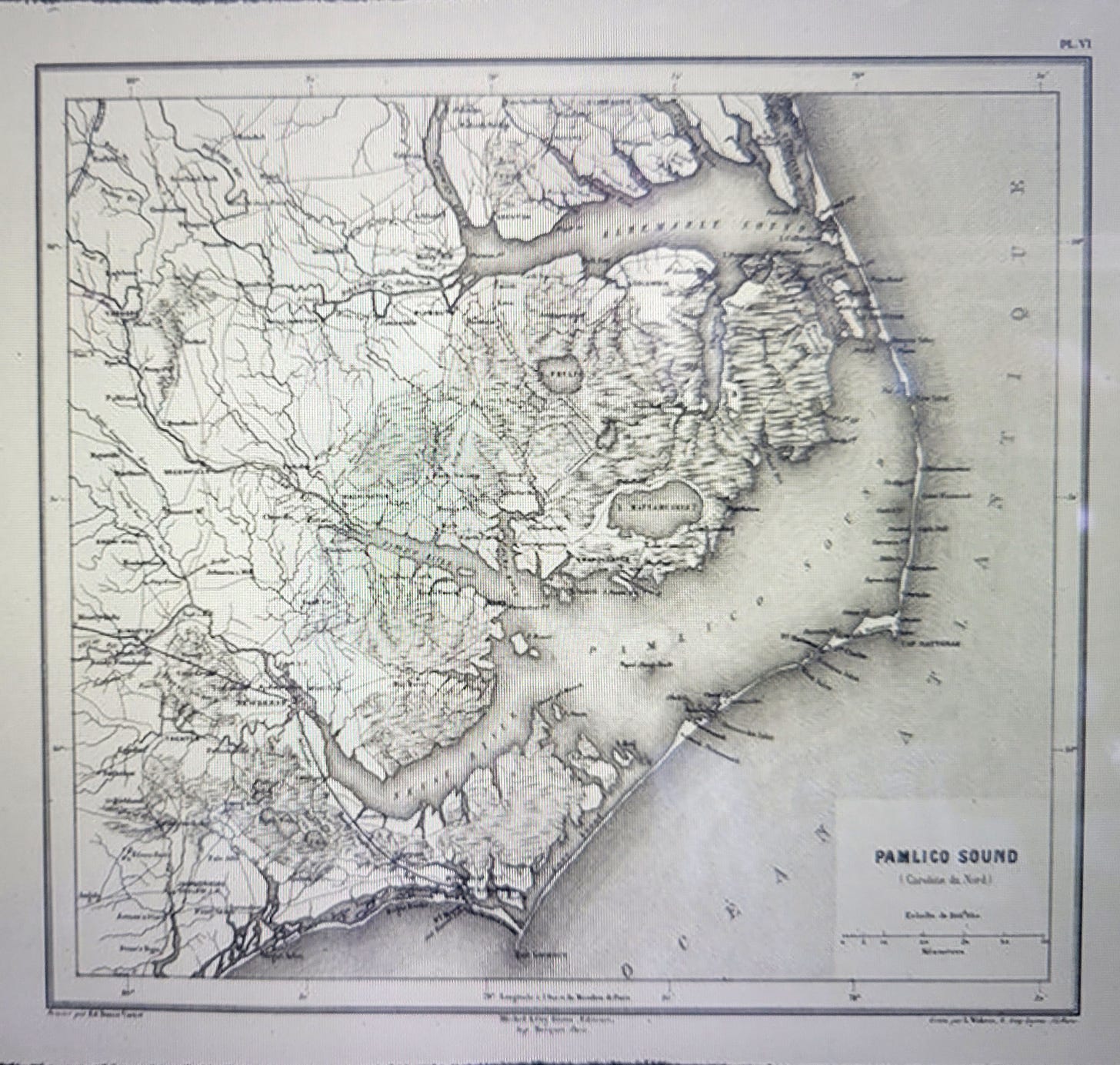
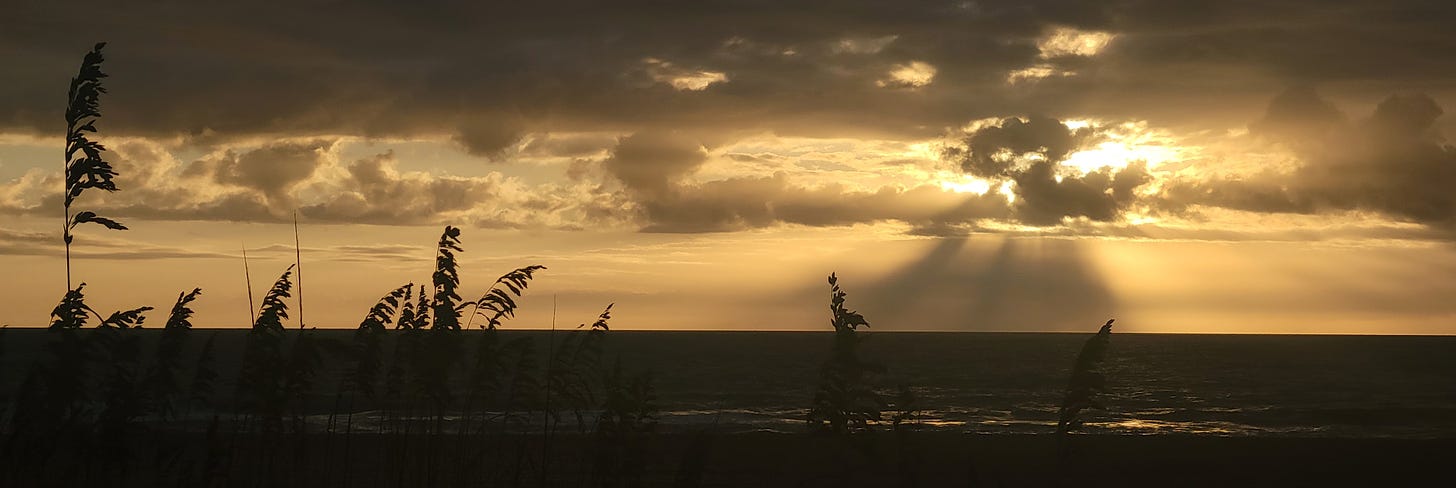
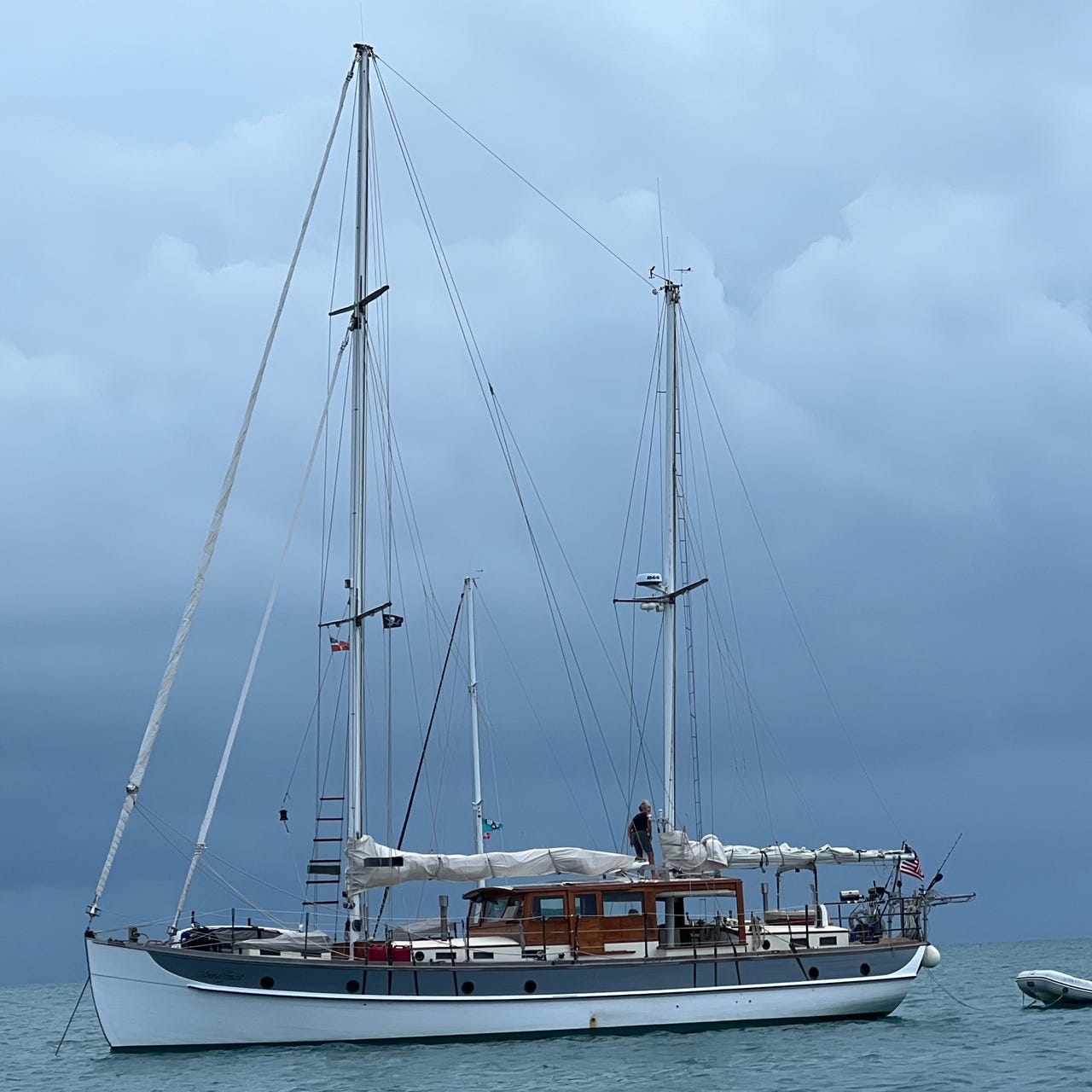
I am so inclined. With the passage of time, the painful memories fade and the good ones can be reclaimed. In fact, that is my driving motive for writing here.
Humbling and awe-inspiring, Janice. I learned to sail on the Albermarle Sound and later on the Pamlico. Spectacular bodies of water. Though your photos and words do them justice, it's rather impossible to capture their magnitude in any written piece.
Glad you got away for a little while to take in the sunrise from another vantage point, and thank you for serving up a needed reminder that perspective matters so very much. Safe travels!